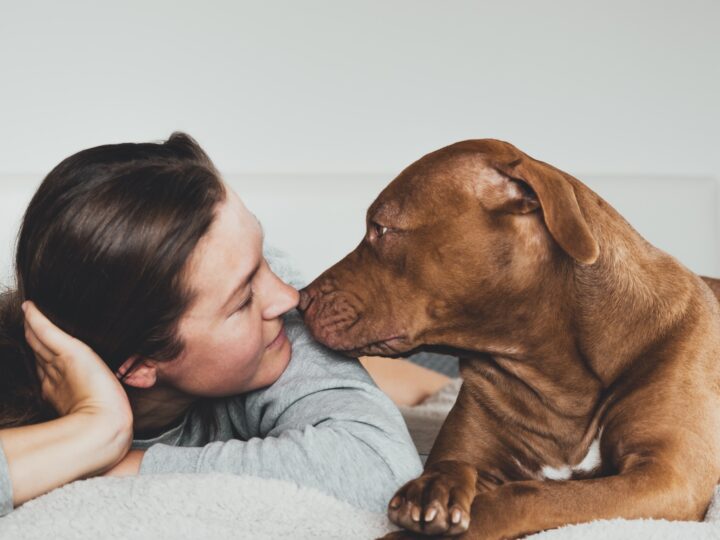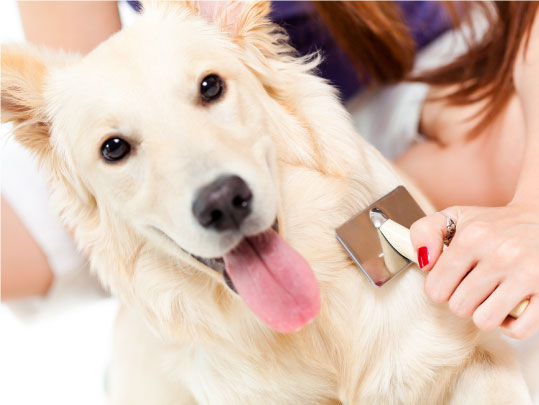
How does a dog’s memory work? What do dogs remember? And why does a dog’s memory sometimes seem so remarkable?
Let’s start with a story.
Luca is twenty-five years old and recently moved abroad for work, leaving behind his parents’ home, where the sweet dog Nuvola lives.
Life in the new city is hectic, and Luca misses his furry friend deeply. When he finally returns home after six months, he wonders if she will still remember him…
It’s a Saturday morning. He arrives at the station, rents a car, and drives to his parents’ house. A few meters from the gate, he hears Nuvola’s familiar barking. She runs toward him, visibly excited and even trembling a little!
Her tail wags furiously, and as soon as Luca opens the gate, she leaps on him, licking his face, arms, and hands… an overwhelming wave of affection!
Luca kneels and hugs her tightly. Nuvola’s love melts his heart.
Even after six months apart, she greets him with the same enthusiasm as when they lived together.
After this emotional moment, Luca sits on the ground, thinking, “Is a dog’s memory really this strong?” The answer is yes. Nuvola showed she remembered him and even sensed his arrival before seeing him.
Once he manages to recover from this whirlwind of emotions, Luca takes Nuvola for a walk in the park. They return home to play for hours, and later, they enjoy a quiet evening in front of the TV. A few days later, when it’s time to leave and return to his work routine, Luca promises his furry friend that he’ll come back as soon as he can.
And so, with each return, Nuvola shows him that no distance or time can break their bond, which will always remain strong.
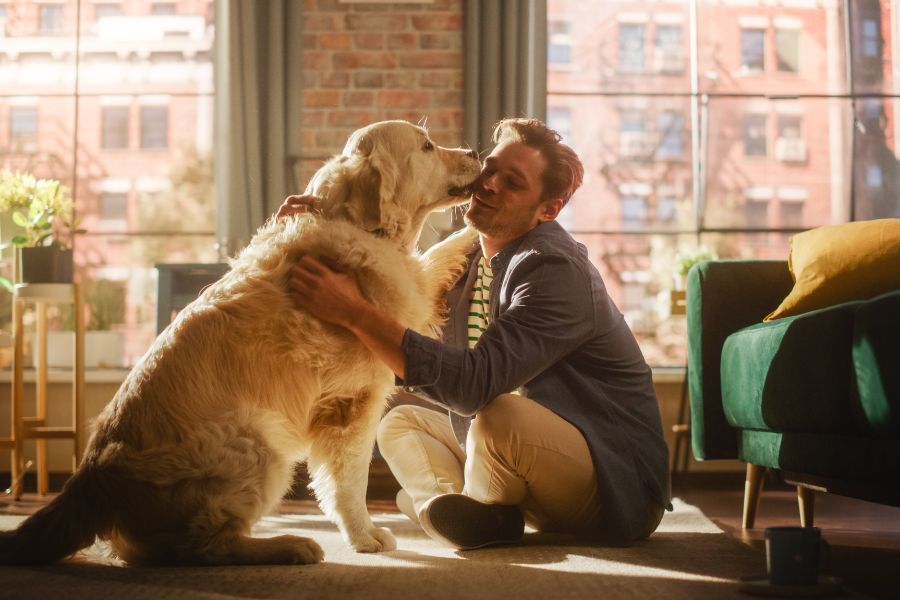
Luca and Nuvola exchanging cuddles and kisses.
What do we know about dogs’ memory?
Luca and Nuvola’s story intertwines the concepts of memory and time—two dimensions closely connected, as explored in our article on how dogs perceive time.
Today, let’s delve into what we know about dogs’ memory by discussing some studies on the subject and addressing common questions about what our furry friends can recall.
Stories like Luca’s are familiar to many of us, though with slight variations. How often have we been amazed to see our dog remember the exact location of an object, for example?
Or how they recognize certain people, even after not seeing them for ages?
And what about their past? Does a dog’s memory retain experiences of abandonment or time spent in a shelter under harsh conditions? Could these memories explain particular behaviors in specific situations?
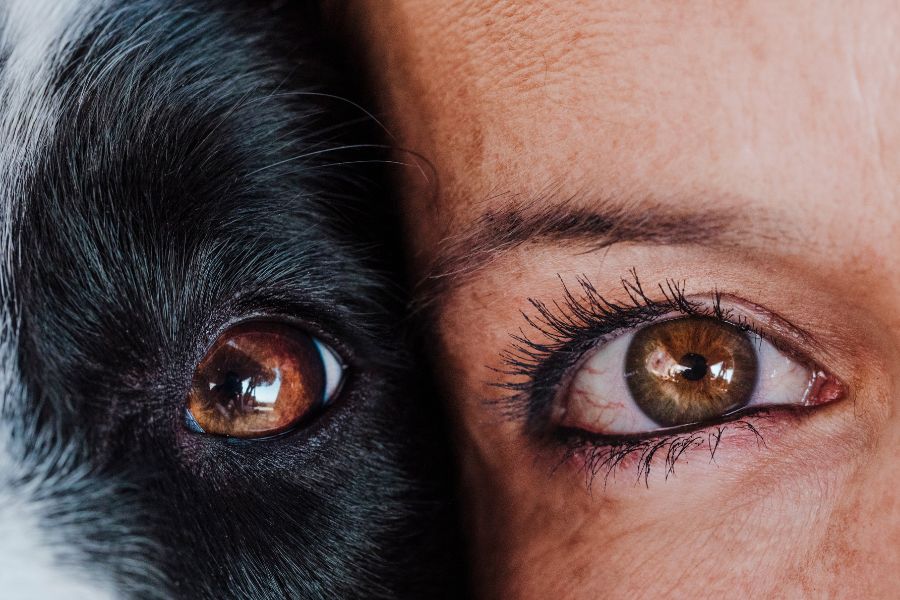
What if dogs’ and humans’ memories have something in common?
How does a dog’s memory differ from human memory?
We know dogs have memory—a crucial starting point for understanding their emotions and behavior.
According to Darwin, “Senses and instincts, emotions, and faculties like love, memory, attention, curiosity, imitation, reason, and so on can be found in nascent or even developed forms in animals.”
Generally speaking, dogs’ memory and humans’ memory are naturally different.
However, there are points in common, and to understand them, we can imagine a dog’s memory as being composed of various compartments, each storing a different type of mnemonic ability.

What a mess! Time to cut and run…
Associative memory in dogs
This is also called declarative or relational memory. It refers to the ability to associate elements with events, people, or places tied to past experiences.
For instance, if we pick up a leash, our four-legged friend immediately associates it with an upcoming walk.
Similarly, think of the vacuum cleaner—it’s often a dog’s worst nightmare. As soon as they see it, they bolt out!
For humans, associative memory is incredibly significant because the brain constantly makes associations based on observed objects. When retrieving one piece of information, the mind recalls another, then another, and so on.
Species memory
Also known as ancestral memory, this dates back to when dogs were wild animals—or even wolves. It is closely tied to survival and may activate in specific circumstances, such as finding the way home when lost.
In humans, this concept relates to the reptilian brain, the most primitive part that governs survival instincts and basic needs. Some researchers attribute mechanisms like fight-or-flight responses to this brain. For example, when faced with potential danger, humans decide to flee or face the threat.
Interestingly, this mechanism remains so deeply ingrained that it often triggers anxiety or stress in non-threatening situations. Fortunately, our pets help alleviate this with their presence and boundless affection.
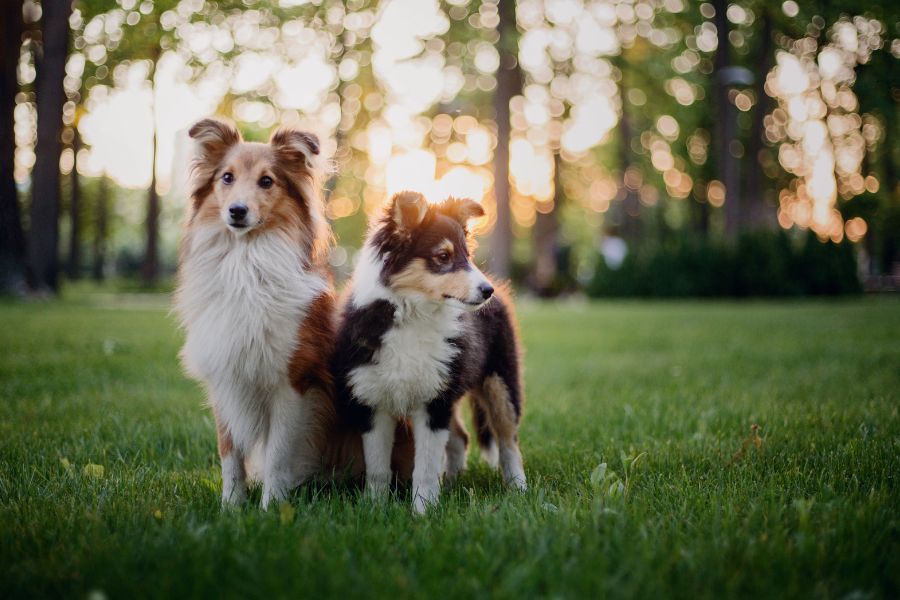
Why do some puppies seem to know how to behave already?
Episodic memory
This refers to the ability to recall a past event, even from a long time ago.
Dogs’ episodic memory was demonstrated through training to imitate human actions. Even after 24 hours, dogs remembered and mimicked the actions, proving their capacity for memory recall.
Researchers at the University of Budapest’s Ethology Department trained 17 dogs using the “Do As I Do” method.
This technique leverages mirror neurons, which activate in both dogs and humans when observing a peer performing a gesture. With this method, the trainer performed an action, like jumping, and then gave the “Do It” signal, prompting the dog to replicate the action.
The study showed that dogs could mimic human actions even after 24 hours, confirming their ability to remember past events.
To further explore, researchers exposed dogs to everyday actions, waited, and unexpectedly gave the “Do It” command.
The result? The dogs perfectly replicated the actions, demonstrating the use of episodic memory.
Humans also possess episodic memory, allowing them to recall events and simultaneously identify when they occurred.
Now that we’ve explored the main types of memory in dogs, let’s dive into how it works in terms of time: short-term and long-term memory.

I have my sweetest memories too!
Dog memory: how long does it last?
Can we determine how long a memory lasts in a dog’s mind? A study conducted at the University of Stockholm showed that dogs can remember actions for a short period of time.
To conduct the research, dogs were shown a hidden object and then asked to wait briefly before searching for it. The results revealed that dogs were able to retain the memory of the object’s location for about two minutes.
This could form the basis for understanding the short-term memory capacity of dogs.
But what happens when memories are tied to a more distant past?

Oh, how wonderful last year’s vacation was…
And what about long-term memory in dogs?
Imagine walking down the street when you encounter your neighbor, who unfortunately doesn’t particularly love animals.
Your dog is with you, and you immediately notice a tense demeanor and a look suggesting discomfort.
Such events are familiar to many of us, and it’s reasonable to conclude that your furry friend remembers and has “cataloged” that person as unpleasant or even hostile.
This ties into long-term memory in dogs, but is it accurate to say that dogs remember events from a very distant past?
One of the world’s leading ethologists, Marc Bekoff, explained that long-term memory acts as an archive of experiences, storing all events from a dog’s life.
This allows them to remember scents, sounds, objects, places, and, of course, people they’ve interacted with.
This connects both to the episodic and associative memory we discussed earlier.
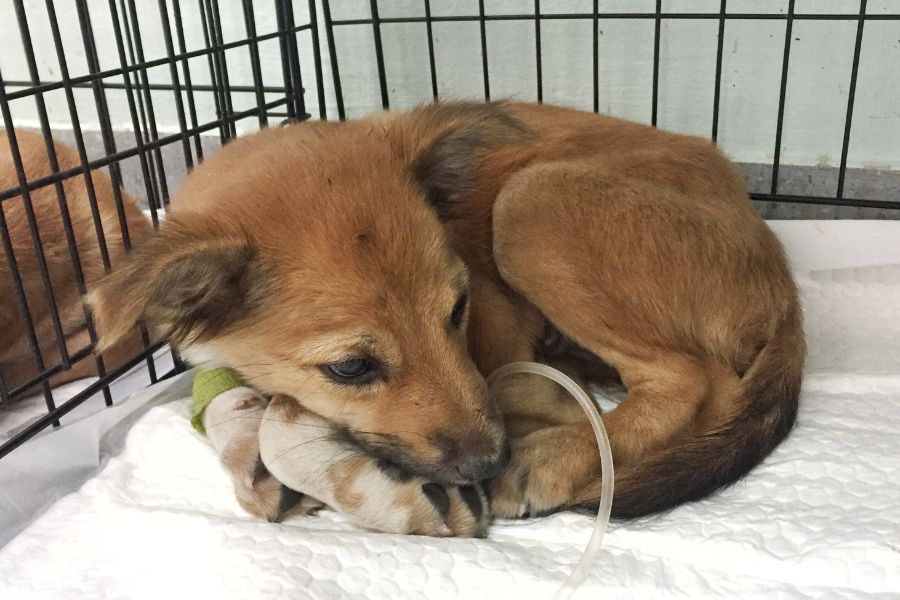
Do our furry friends remember suffering as puppies?
Do dogs remember being mistreated?
According to Bekoff, regardless of whether events are positive or negative, dogs remember what happens during their lives, particularly in their early months and during sexual maturation.
These events have the most significant impact on their future lives because they are triggered by certain stimuli.
The answer to whether dogs remember mistreatment or a challenging past is therefore yes: they remember it clearly.
Over time, their capacity to learn—and consequently to remember—does not disappear. However, as they age, it may take more repetitions for a dog to memorize something specific.
Returning to the encounter with the neighbor, the dog might recall unpleasant events involving that person and display distrust or hostility.
This might even awaken more distant memories that could lead to phobias, as we discussed in our article about canine phobias and how to overcome them together.
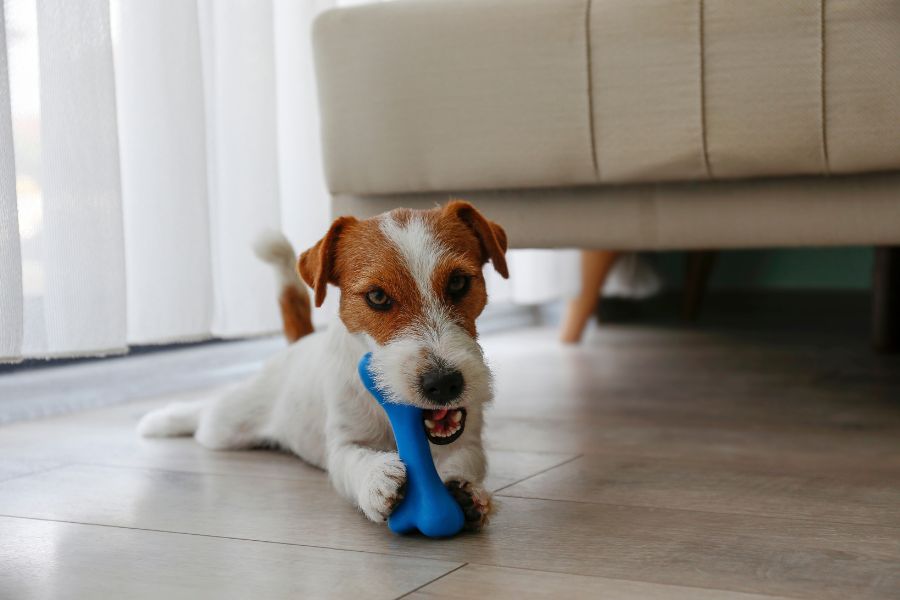
Yummy! This bone is fun and helps train my memory.
Dogs’ memory and chewing
Yes, there is a significant correlation between chewing and cognitive abilities in dogs.
This was demonstrated by a study published in Science Direct, which examined how chew toys influenced dogs’ performance in two different memory tests.
In this case, researchers conducted tests by giving dogs some chew toys. Dogs with high levels of anxiety showed increased chewing frequency, which improved their condition and also enhanced their short-term memory performance.
These results suggest that chewing can have very positive effects on cognitive levels.
And, while it might seem obvious to reiterate, it once again shows that our furry friends need us to care for them beyond their basic needs.
Providing them with chew toys helps improve their emotional well-being, demonstrating how beneficial it can be to pamper them with love and attention, making them feel always loved and protected.
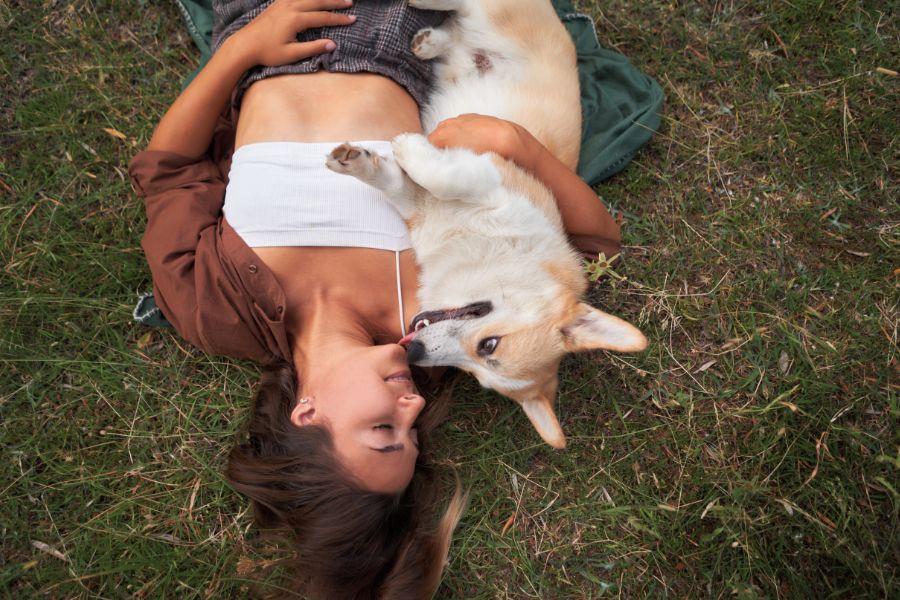
Yes, dogs remember the special moments we share with them.
Sì, i cani ricordano i momenti speciali che trascorriamo con loro.
Is dogs’ memory emotional?
Dogs remember events based on the emotion they feel and perceive at the exact moment they experience them. For this reason, we can talk about dogs’ emotional memory, which is also tied to episodic memory.
A clear example is when a dog has had a traumatic or painful event for some reason, or a negative experience with a specific object; when they encounter it again or a similar one, they will likely withdraw or move away.
On the other hand, dogs recognize places they love and people they adore, showing joy, as demonstrated by the story of Luca and sweet Nuvola, shared at the beginning of this article.
It might resemble our ability to associate an emotion with a place: if we’ve had positive experiences and felt good there, we love that place and want to return. Conversely, a negative experience creates an adverse emotion tied to that location.
This is also a form of mnemonic learning used in dog training to teach specific behaviors, called the positive reinforcement technique.
In this case, the desired action is associated with a reward or extra cuddles, so the dog remembers what to do to earn that precious reward again. This strengthens the behaviors we’d like from our dog, enhances their education in various situations, and improves our bond with them.
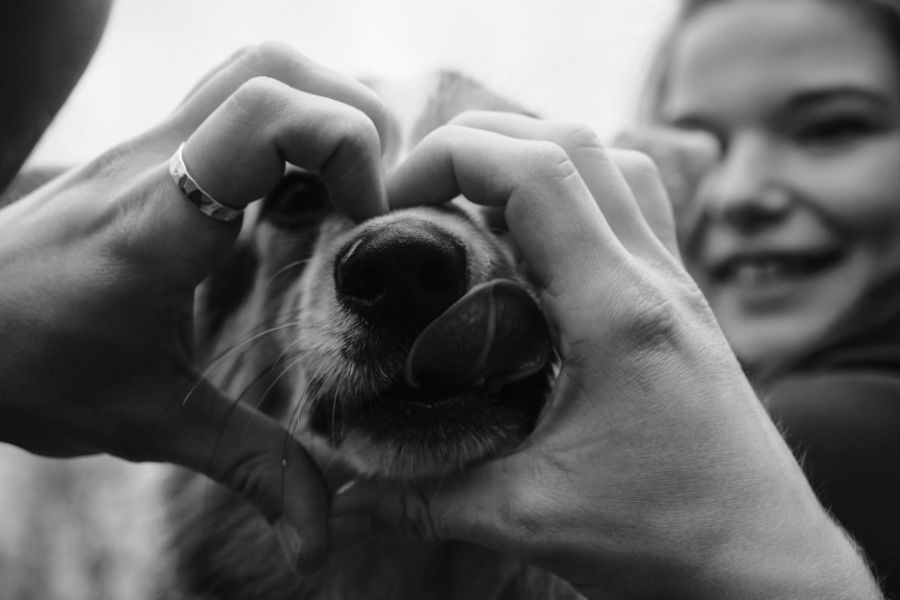
Are our pets’ noses truly superpowers?
Dogs’ memory is also about their sense of smell
Let’s not forget about their sense of smell!
Olfaction is the most developed sense in our furry friends, and dogs use it to remember scents, even years later.
Olfactory memory is closely tied to emotional memory, as it is for humans.
How many times, smelling the aroma of coffee brewing, do we know a nice cup awaits us in the kitchen, and we can’t wait to enjoy it?
The same happens with dogs: associations in the brain are related to what they’ve perceived on a sensory and emotional level during interactions with people.
This means that gestures, movements, looks, as well as the voice and especially the scent, create memories etched in their brain.
And this is undoubtedly a matter of memory.
Does auditory memory exist in dogs?
Absolutely!
The concept is the same: associating something unpleasant or pleasant with a past memory. This also occurs in dogs’ memory with auditory sensations.
For example, a dog recognizes the sound of their pet mate’s car and gets excited even before the door is opened.
This is a clear example of auditory memory in dogs.
Another example of auditory memory is the sound of thunder or fireworks. These can be genuinely traumatic noises for our furry friends. This is why, during training, a dog trainer will repeat the sound multiple times (even increasing the volume) to accustom the dog to recall the noise in a way that prevents fear or discomfort.
And what about genetic auditory memory?
Think of an alarm or a siren, for instance. This particular auditory stimulus might resemble a wolf’s howl; in fact, research by Dr. Diana Koranova shows that emergency sirens are designed based on the frequencies of wolves’ howls. This explains the curious reaction of our furry friends!
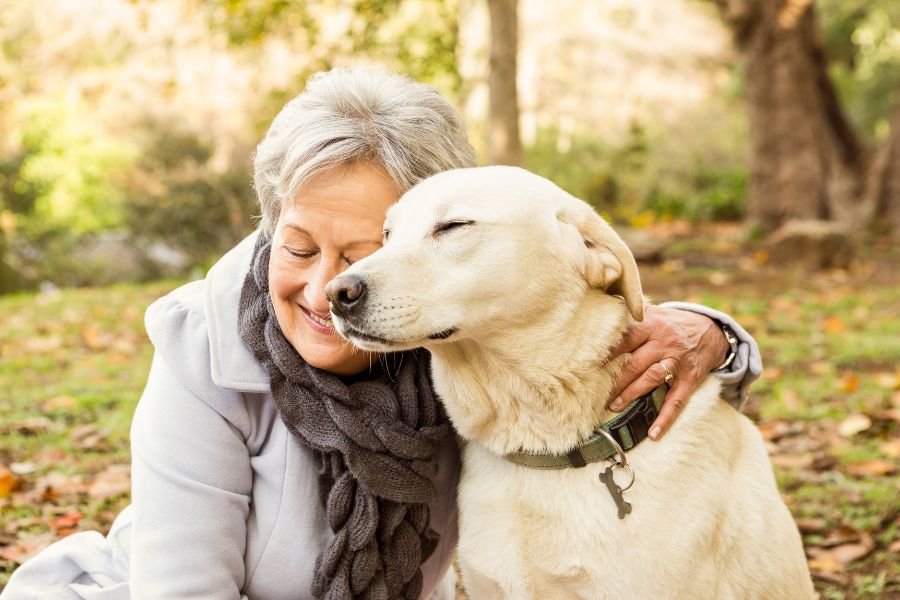
Like humans, dogs can lose memory as they age.
Do dogs lose their memory?
Dogs’ memory can vary significantly between individuals. It also changes with age and the experiences a dog has had.
For instance, a dog living in the wild may need to remember far more than a family dog. This is because a domestic dog’s daily routine, which is often repetitive, may reduce his memory capacity over time.
Additionally, dogs can suffer from cognitive dysfunctions that lead to memory loss.
In such cases, they may experience degenerative nervous system processes, causing them to no longer recognize familiar people or environments, struggle with previously learned exercises, or fail to learn new ones.
For this reason, it’s essential to keep our four-legged companions lively and engaged.
Can a dog’s memory be trained?
Experts agree that training a dog’s memory is crucial, especially for older dogs.
It’s similar to humans: if we follow the same routine every day, never try new things, or always see the same people and places, our thinking, focus, and memory abilities can deteriorate.
To train a dog’s memory, mental activation games can make their days more stimulating while maintaining routines, which dogs love and find essential. For more on this, check out our article on mental activation games.
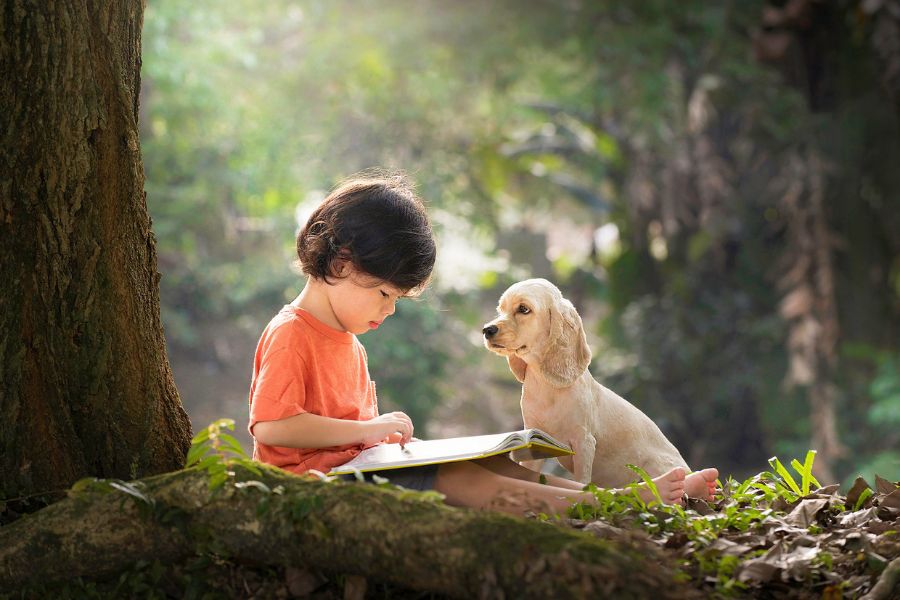
Furry friends star in countless heartwarming stories.
Are there books about dogs’ memory?
The story of a dog who taught a child loyalty
A book closely tied to the theme of dogs’ memory is “Story of a Dog Teaching Loyalty to a Child” by Luis Sepúlveda.
This novel tells the story of a wolfdog lost by a caravan in Chile and found by a jaguar, which brings him to the home of the chief of the Mapuche tribe.
The family adopts the puppy, names him Aufman, and he becomes the best friend of the chief’s son, little Aukamañ.
The two grow up together in harmony with nature, but their lives are disrupted by cruel individuals who want to seize the land to build roads and railways, destroying anything that hinders their ambitions.
Aufman and Aukamañ are sadly separated, and when the boy grows up, he rises against the oppressors.
We won’t spoil the ending, but as the story unfolds, the dog’s memory plays a pivotal role, leading to events that celebrate loyalty, friendship, and genuine freedom.
To conclude, now that we know more about dogs’ memory, we can better understand their behavior and strive to enhance their cognitive well-being.
We can do this by stimulating their memory through play, exposing them to new experiences, and offering them a lot of love and affection, so their memories are always wonderful.
Article written with the consultancy of Chiara Festelli, Dog Trainer.





